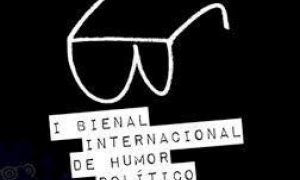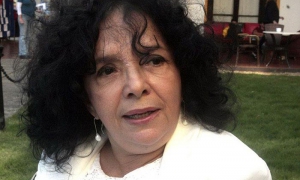
In the distance, in the midst of the winter gusts that hovered over the spirit and the anatomy of that creature born far away, on an island still of improbable destiny, the poet seized a powerful image: "the palms, oh, the delicious palms...".
It is known that the Bayamese, when they conquered their freedom and felt the implacable siege of the colonialist armies, did not hesitate to set fire to the eastern city. Eusebio Leal said, with the fiery verb that no one like him fully mastered, that the commander in chief of the Spanish forces, upon reaching the center of the site, read among the ashes some words: "Plaza de la Revolución" (Revolution Square).
More than a century later, before the walls of Moncada, the troubadour embodied the voice of a people determined to defend against all odds the destiny it had given itself: "I die as I lived", we sang with him, when the crisis of the 90s of the last century had not yet been unleashed with all its intensity.
Images as symbols of a vocation of irreducible resistance. The same that at the height of the third decade of the XXI century is renewed in the midst of tremendous difficulties. A resistance that is renewed in the face of the intensification of imperial hostility against Cuba, the effects of the world economic crisis and serious armed conflicts, and the distortions and errors in the implementation and monitoring of internal processes. A resistance that reminds us how in similar critical moments, Fidel made a defining call: "Culture is the first thing to be saved".
If anyone thought that a cultural blackout would ensue, they were wrong in every sense of the word. Month after month, 2023 has been a year in which concerts, recitals, theatrical productions, dance performances, literary presentations, from East to West, have kept the flame of culture alive.
It is not only about days of concentrated significance, such as the International Book Fair Cuba 2023, or the actions for the Day of Cuban Culture in October, or the celebration of the 75th anniversary of the National Ballet of Cuba, or the incombustible Fire Festival in Santiago de Cuba, or the May Pilgrimages in Holguin, or the rebirth of La Guarapachanga in Pinar del Rio, and the successful Festival of New Latin American Cinema, for which a few did not bet on ..., but of what is being done in Cuba...., but of what is being achieved with the daily effort, through the consistent application, which provides for the correction of errors, of the cultural policy of the Revolution.
Under the fidelist-inspired title Sowing Ideas, Sowing Consciousness, the program against cultural decolonization is one of the fundamental milestones of the year that is ending. It was launched last January 28, coinciding with the 170th anniversary of José Martí's birth. Representatives of our artistic and intellectual vanguard were involved in the elaboration of the theses and initial lines of action. In doing so, they responded to approaches, concerns, ideas and proposals debated over the last few years.
For Fidel, as Abel Prieto has observed, culture is "a transforming energy of exceptional scope, which is intimately linked to conduct, to ethics, and is capable of contributing decisively to the "human improvement" in which Martí had so much faith". In culture he saw, and we must see, the way to achieve full emancipation: that which offers the possibility of defending freedom, memory, origins, and of undoing the vast web of manipulations that hover over Cuban reality.
The institutional system of culture has been subjected to hard tests, not only those derived from the lack of technical and material resources, but also from something much more serious: as part of the ideological subversion and cultural war of the enemies of the Revolution, inside and outside the country, there are those who work to dismantle, or at least discredit, that system. They aspire to fracture the unity between the artistic and intellectual movement and the cultural institutions.
The permanent and fruitful dialogue between creators and institutional directors reached this year a zenithal moment with the process that led to the 4th Congress of the Hermanos Saíz Association and the follow-up to the agreements and proposals of the last Congress of Uneac.
One of the most colossal efforts is the support of artistic education. From elementary schools to the University of the Arts, even when specialization requires costly resources, the most important thing in recent years, and 2023 is no exception, is to articulate ethical, esthetic and identity values that result in the comprehensive training of future artists.
The impact of cultural policy on the nation's spiritual fabric presents its greatest challenges today in two intertwined areas: the community and media dimensions. Although far from achieving the expected objectives, community actions, renewed as a result of the programs for the transformation of neighborhoods and enclaves in the municipalities, artists, art instructors and promoters have expressed with acts their commitment to the emergence of a new subjectivity on an individual and social scale.
In the media sphere, with particular emphasis now that new technologies and socialization platforms have burst in, Cuban artistic and literary culture must necessarily project itself in a much more proactive manner.
To resist is to advance. To strengthen the soul of all Cubans, of all Cuban women. The symbols that drive us will give rise to a culture of responsibility, of a sense of belonging, of unity. Such is the forge and destiny of our identity.






